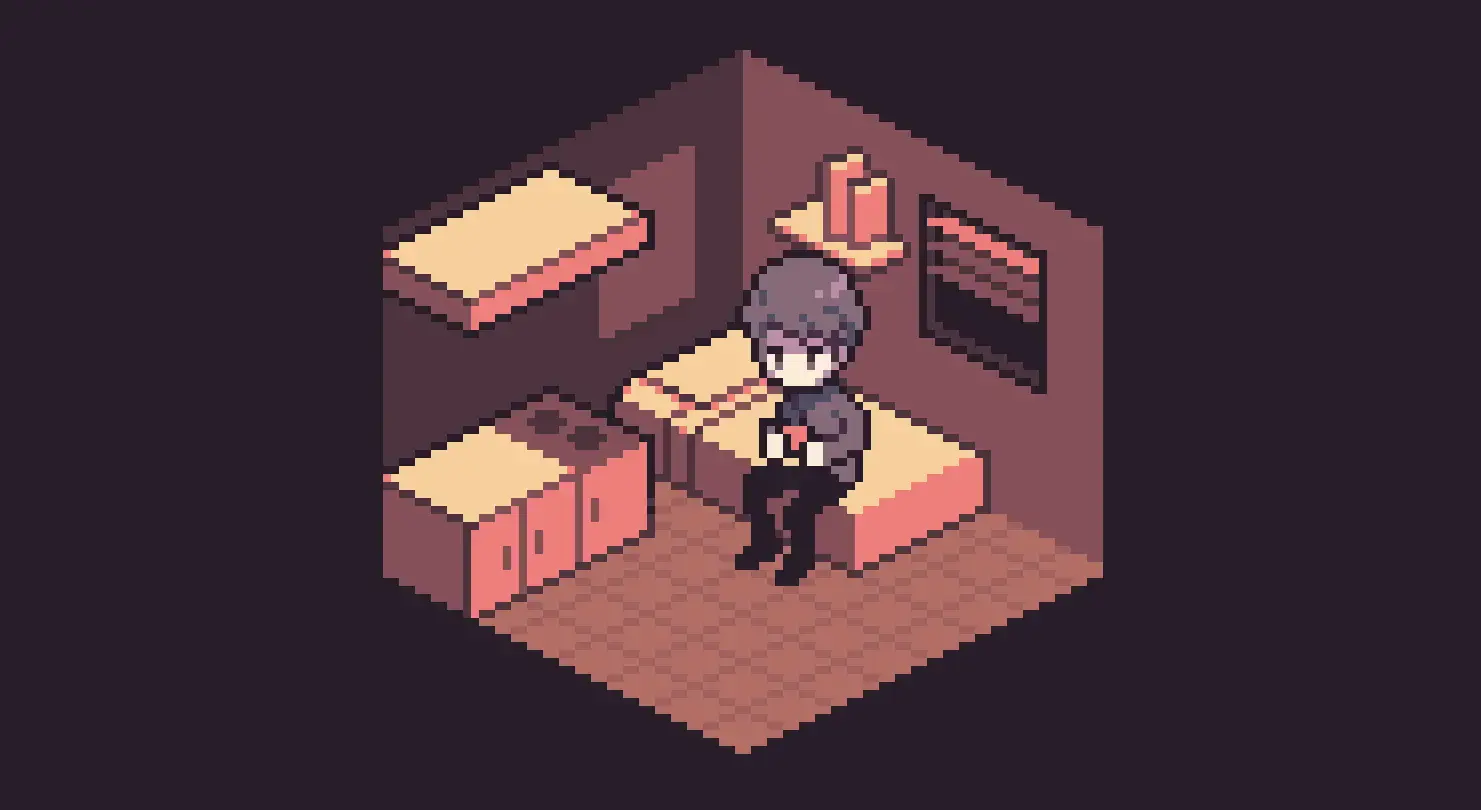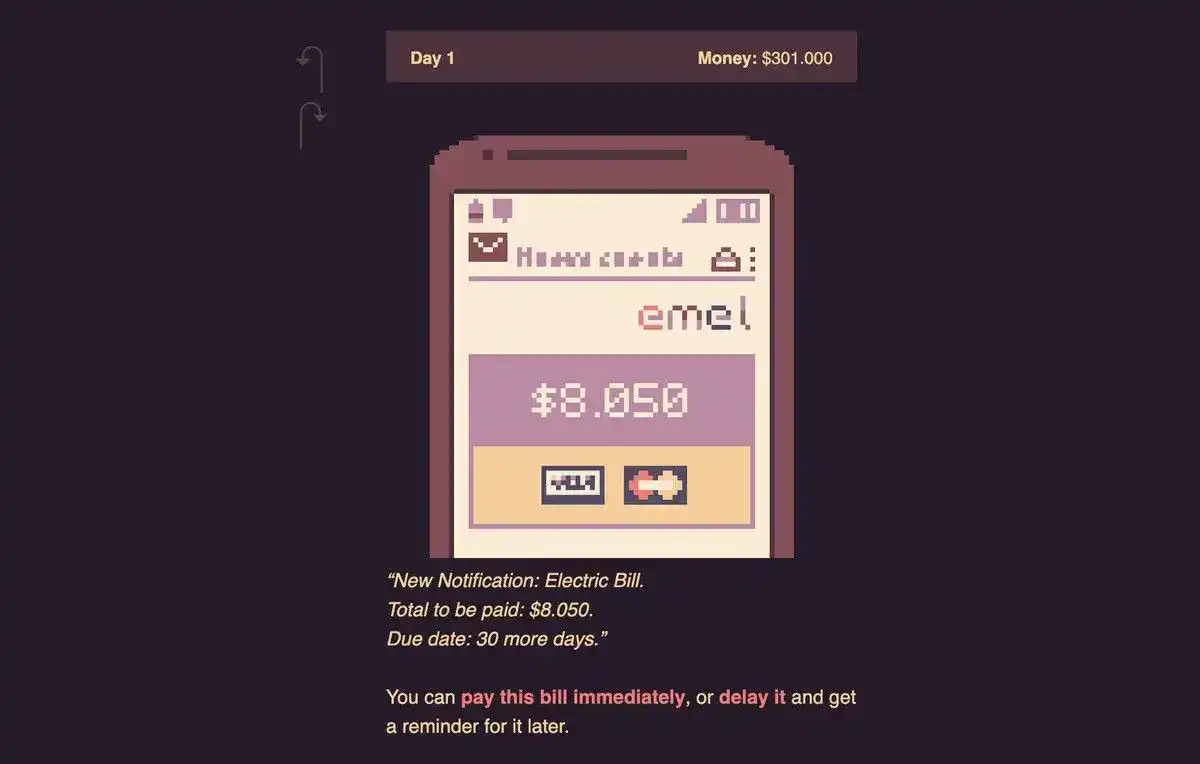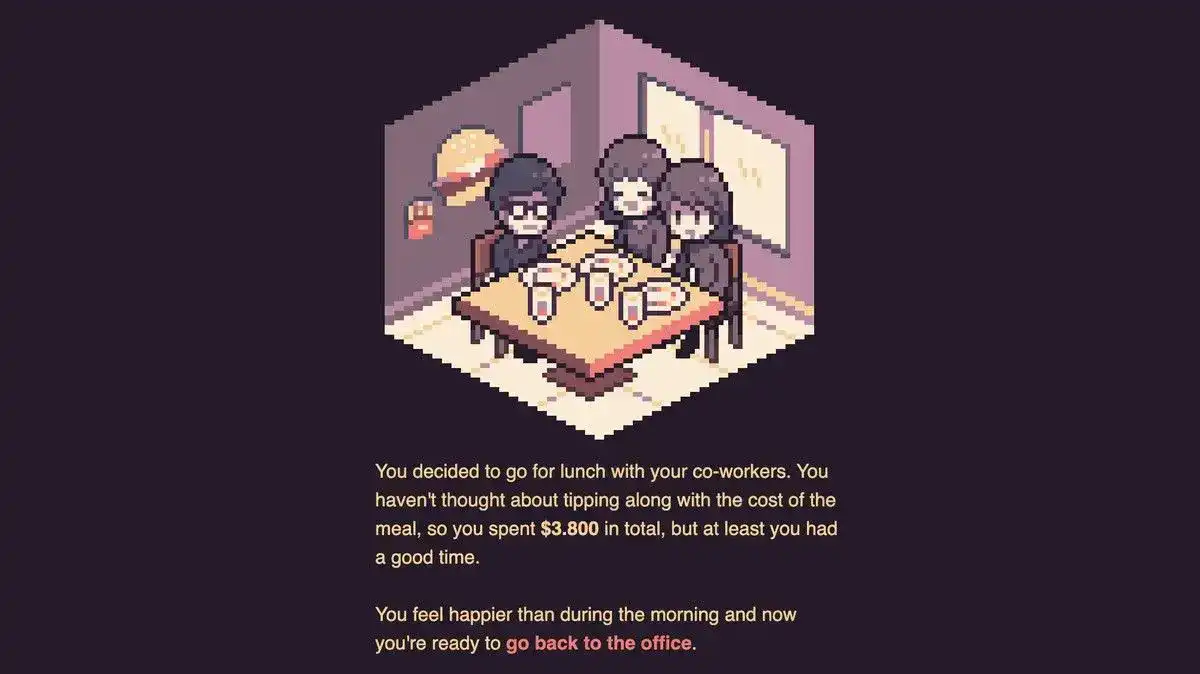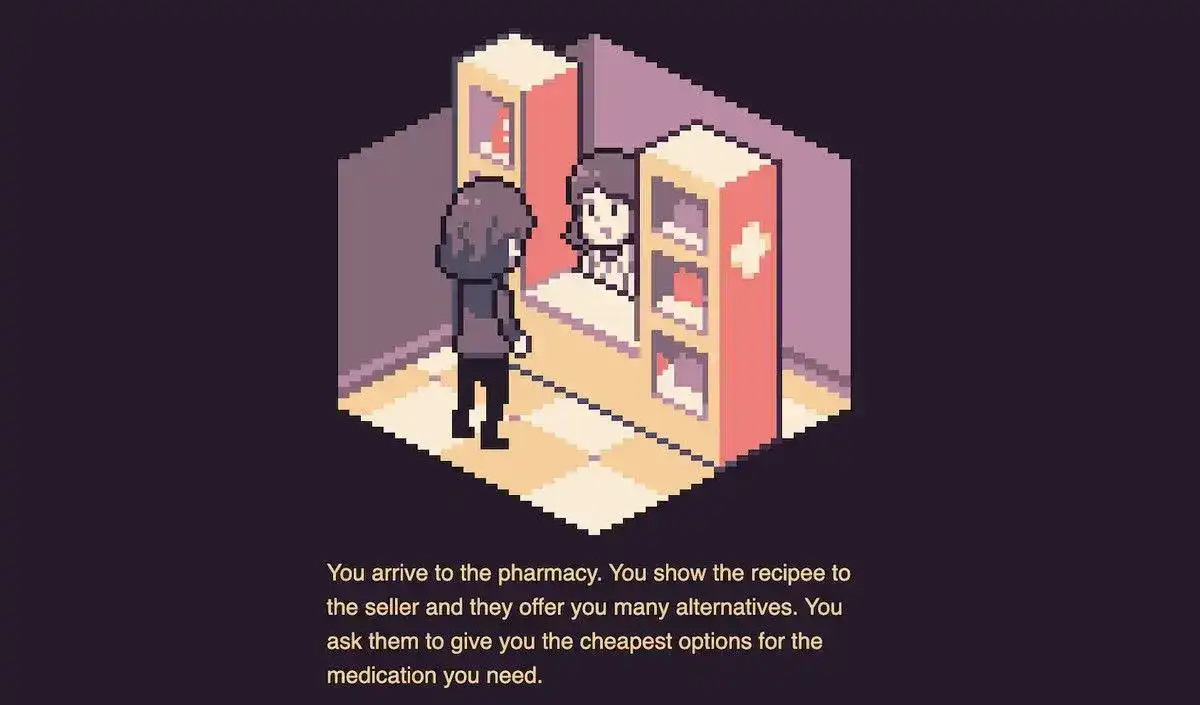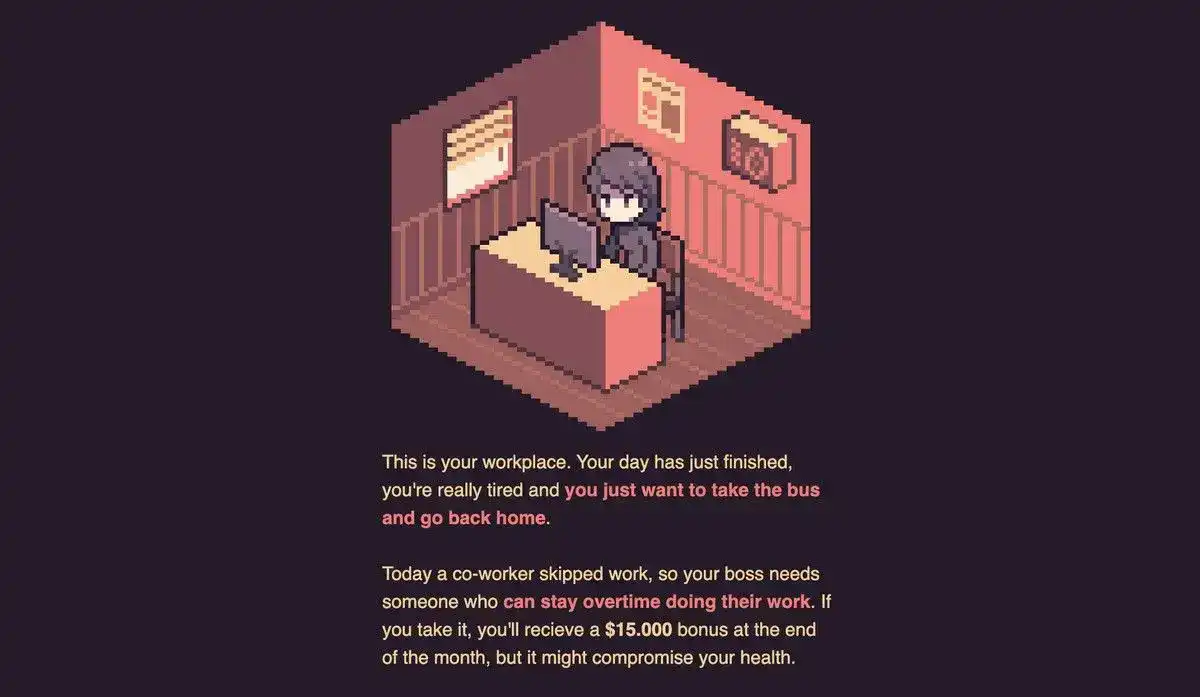Nanopesos is a simple and short budget management game taking place in a small cube of space consisting of only a few hundred pixels.
Though it took only 15 minutes to play through once, I was immersed in each second and came to thoroughly understand the message that the developer Camila Gormaz wanted to convey: it's very hard to live on minimum wage when trying to keep up with high living costs.
Every action in life takes thorough thought about the amount of dollars and cents that would be required and almost all activities take a backseat to affording rent and and paying bills.
Dwindling Dollars Lead to Difficult Decisions
The game starts with you in your small studio apartment and right away you have a bill to pay. With only a couple hundred dollars in your pocket, every cent is painful to let go of, but you have to pay up nonetheless. You can choose between paying the bill immediately or putting it off for the next day.
From here, the decisions only become more difficult.
The expenses continue to add up throughout the game as you go through all the routines of an average life — going to work, shopping at the grocery store, interacting with coworkers, and visiting family.
Most situations will cost you either money or health, and each decision is a hard one due to not only all the bills that keep popping up, but also the large sum of rent you'll have to pay at the end of the month.
In most scenes, you are given choices about whether to spend, spend less, or not spend at all, forcing you to juggle your physical and mental health with your bills and savings — or lack thereof.
The expenses are precisely calculated and when every cent matters, you might not want to spend an extra 99 cents on a bag at the grocery store, a few dollars to go have pizza with friends after a long work week, or even money for a doctor's appointment and medicine when you become sick.
Saving Through Sacrifice
Warning: ending outcome spoilers in this section. To skip, scroll ahead to the next section.
Though there is an option to choose between living on minimum wage ($301 USD) versus living on $400 USD, saving money to have enough rent for the end of the month was still a tight squeeze either way.
The second time through, I played in the $400 USD mode, skipped almost all social events and made sacrifices in food, transportation, and overtime. Yet, I still ended the game with only 40% health and my savings in the negatives after rent, requiring me to take a loan on top of my student loans.
The third time, I skipped every single social event completely, went to work in dripping clothes to avoid spending at the laundromat, got to work late to avoid paying for a cab, and accepted money from my poor grandmother. Only then did I end the game positive... with just 37 cents left after rent and 20% health.
A Painful Lesson, an Important Discussion
By the end of the experience, the small cube of space the game took place in felt more like a squished cage that I couldn't get out of instead of like a cute, cozy abode.
The game doesn't forget to remind us that this would all be done again the next month. Our character will continue the cycle of barely scraping by just to afford rent and bills in Chile after being told that graduating college would lead to a bright future.
Most management games have some way for you to get rich or expand your fortune exponentially quickly. This is the only budget management game I have played with such harsh realism, accurately portraying the hardship those earning a meager minimum wage in high cost areas face just to attain basic human needs like food and shelter.
This budget management game is only 15 minutes, 30 if you do multiple playthroughs, but makes players feel the tight squeeze and dire consequences of a low minimum wage and lack of support. It is no doubt worth a play — and a discussion.
